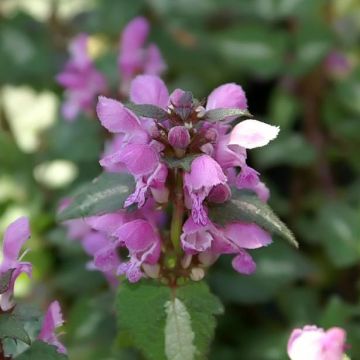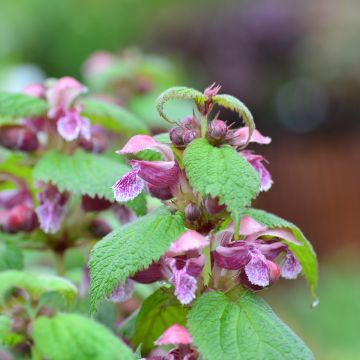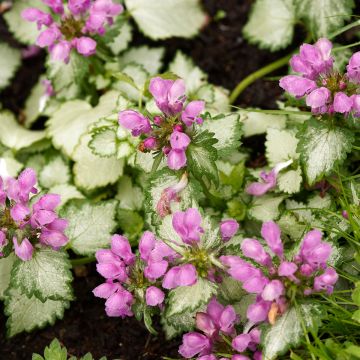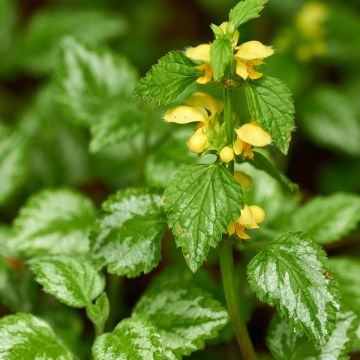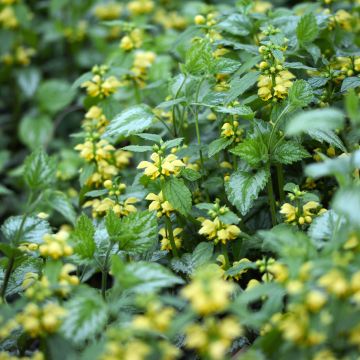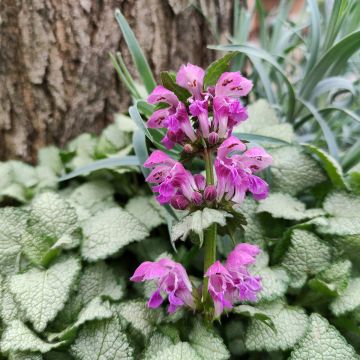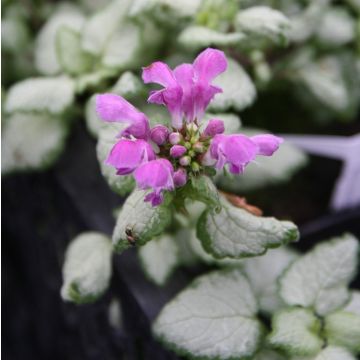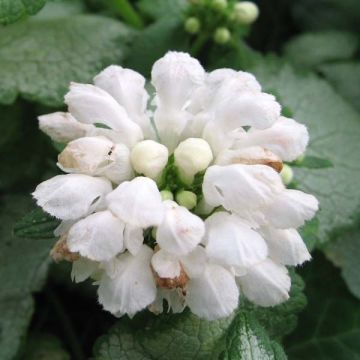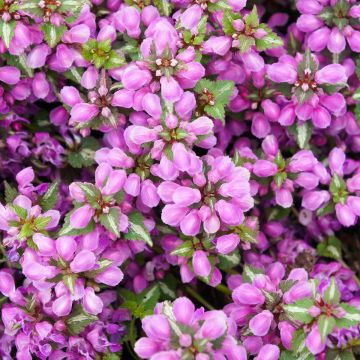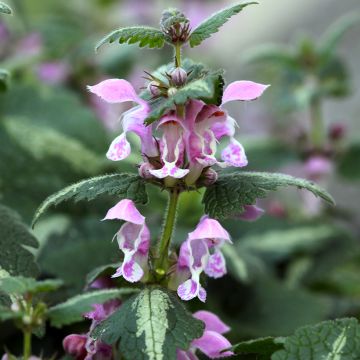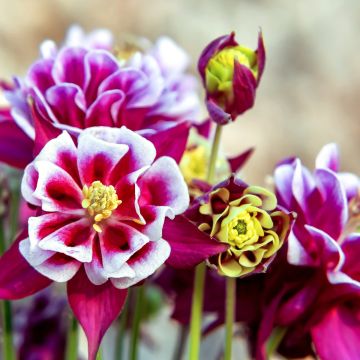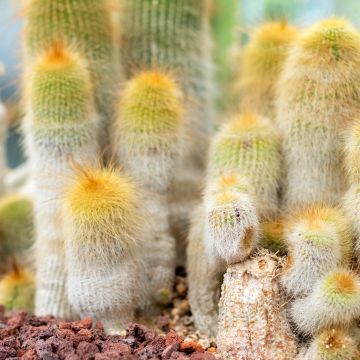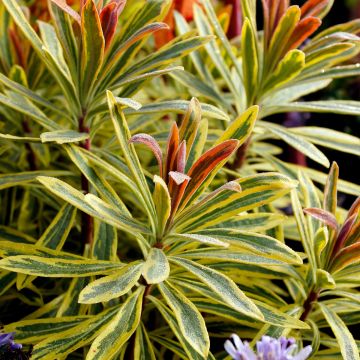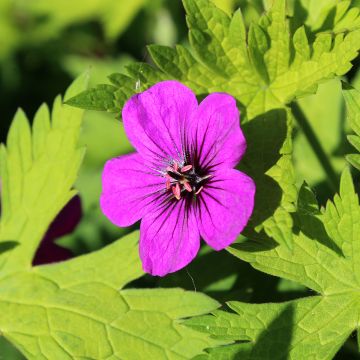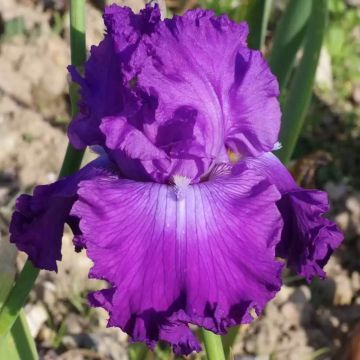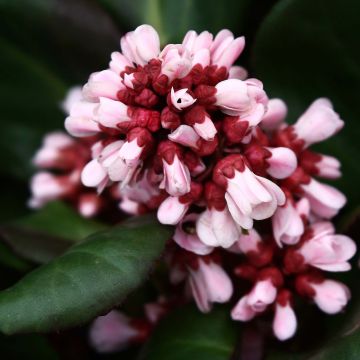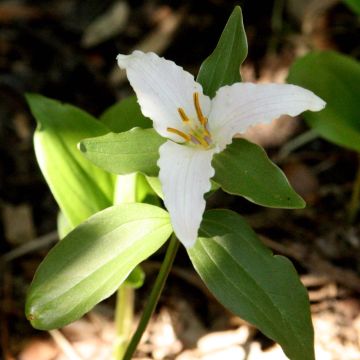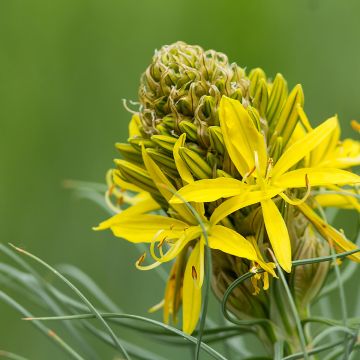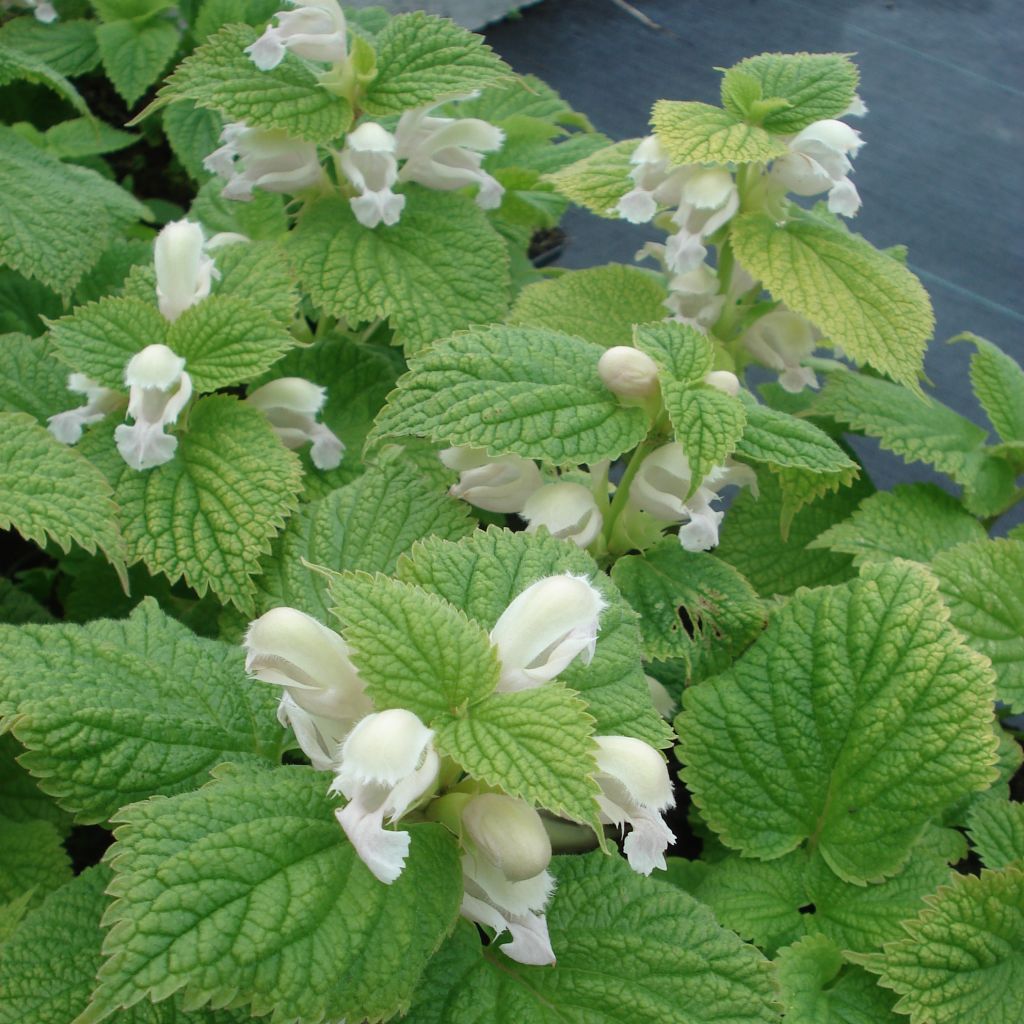

Lamium orvala Album
Lamium orvala Album
Lamium orvala Album
Balm-leaved red Deadnettle, Balm-leaved Archangel, Hungary Deadnettle
This item cannot be shipped to the selected country
Delivery charge from €5.90
More information
Schedule delivery date,
and select date in basket
This plant carries a 12 months recovery warranty
More information
We guarantee the quality of our plants for a full growing cycle, and will replace at our expense any plant that fails to recover under normal climatic and planting conditions.
From €5.90 for pickup delivery and €6.90 for home delivery
Express home delivery from €8.90.
Does this plant fit my garden?
Set up your Plantfit profile →
Description
Lamium orvala Album or White Deadnettle has many advantages. Its generous foliage, with its particularly graphic leaves, forms a beautiful bushy clump. Its charming flowers, bright white just shaded with a light pink, contrast with the green leaves in the background. It is also a hardy perennial, undemanding, which is happy in ordinary soil, even poor soil, and adapts to different locations.
The rhizomatous roots of the White Deadnettle are creeping, they do not sink deeply and do not show invasive behaviour. They only expand to allow the stump to develop. Solid stems covered with leaves rise from it, these are semi-evergreen under certain climates. Their leaves are ovate, slightly heart-shaped, and have dentate edges. They are particularly veined and embossed, reflecting even the slightest light. It is reminiscent of nettles who they are related to but do not worry about stings, Lamium orvala Album is not urticating.
Standing out clearly from this green setting, small flowers, 3 cm (1in), appear from May to June-July, with a calyx with villous teeth that surrounds the corolla tube. The corolla extends into two fringed lips, one upper and one lower. The name "Lamium" actually comes from Greek and means a throat or an open mouth. If you take the time to observe them, you can admire their delicacy and this unique shape. This will allow you to no longer consider nettles as uninteresting, as they have the same flowers.
The average size of the Lamium orvala Album, 50 cm (20in) tall by 30 cm (12in) wide, allows it to fit anywhere without difficulty, offering us its abundant foliage. Essential in a green and white ensemble, it harmonizes perfectly with Japanese Anemones, Canadian Dogwood, and follows on from Hellebores. It also integrates perfectly into a composition of varied foliage, alongside Heucheras, Lungworts, and perennial Geraniums. It will then be placed at the front of large flower beds or at the feet of bushes.
Report an error about the product description
Lamium orvala Album in pictures
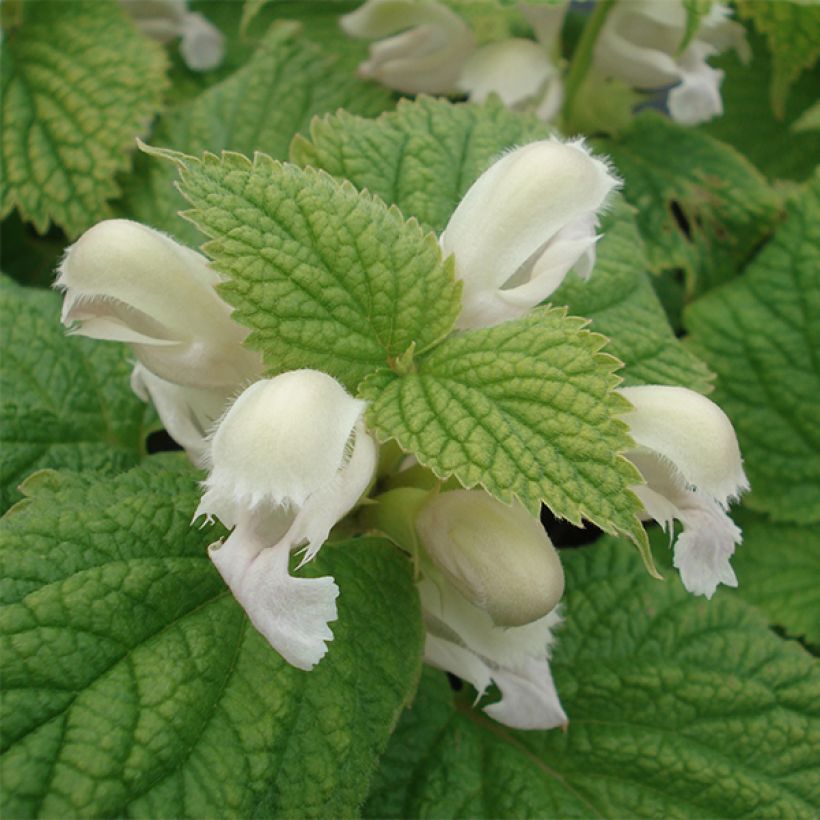

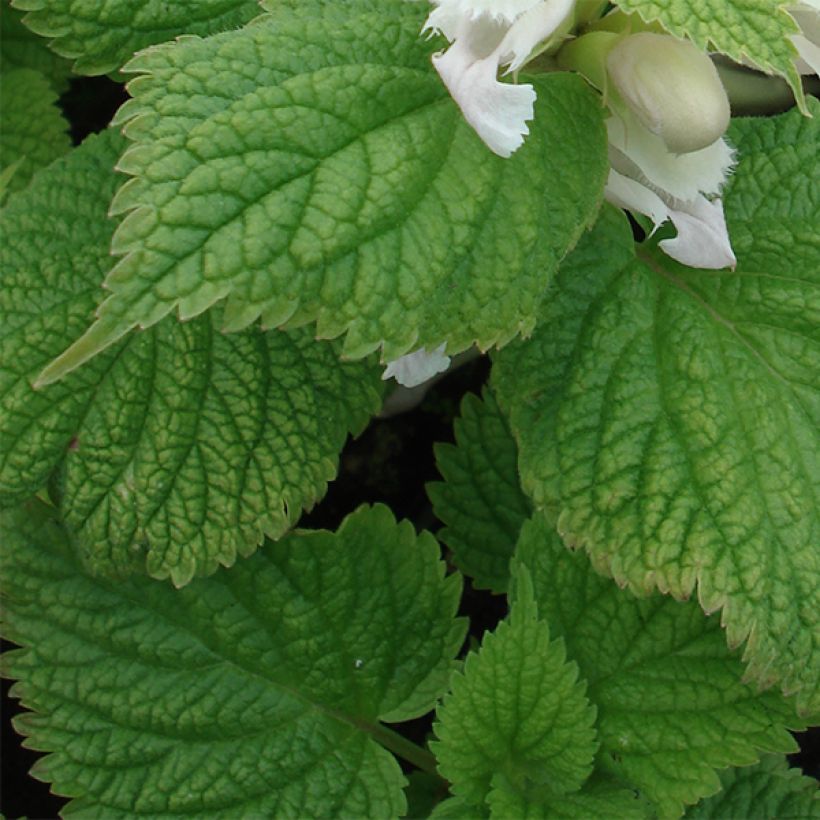

Flowering
Foliage
Plant habit
Botanical data
Lamium
orvala
Album
Lamiaceae
Balm-leaved red Deadnettle, Balm-leaved Archangel, Hungary Deadnettle
Cultivar or hybrid
Other Lamium - Dead-Nettle
Planting and care
Lamium orval Album can be planted in spring or autumn. It appreciates ordinary soils and can even tolerate poor soil. Once established, it can withstand drought, but prefers moist soil. It naturally finds its place at the foot of trees and bushes.
It can adapt to any position, but its foliage will be denser under partial shade.
It can withstand temperatures as low as -15°C (5°F). However, its foliage disappears due to frost, so the stems should be pruned at the end of winter for them to regenerate in spring.
Planting period
Intended location
Care
This item has not been reviewed yet - be the first to leave a review about it.
Spring flowering perennials
Haven't found what you were looking for?
Hardiness is the lowest winter temperature a plant can endure without suffering serious damage or even dying. However, hardiness is affected by location (a sheltered area, such as a patio), protection (winter cover) and soil type (hardiness is improved by well-drained soil).

Photo Sharing Terms & Conditions
In order to encourage gardeners to interact and share their experiences, Promesse de fleurs offers various media enabling content to be uploaded onto its Site - in particular via the ‘Photo sharing’ module.
The User agrees to refrain from:
- Posting any content that is illegal, prejudicial, insulting, racist, inciteful to hatred, revisionist, contrary to public decency, that infringes on privacy or on the privacy rights of third parties, in particular the publicity rights of persons and goods, intellectual property rights, or the right to privacy.
- Submitting content on behalf of a third party;
- Impersonate the identity of a third party and/or publish any personal information about a third party;
In general, the User undertakes to refrain from any unethical behaviour.
All Content (in particular text, comments, files, images, photos, videos, creative works, etc.), which may be subject to property or intellectual property rights, image or other private rights, shall remain the property of the User, subject to the limited rights granted by the terms of the licence granted by Promesse de fleurs as stated below. Users are at liberty to publish or not to publish such Content on the Site, notably via the ‘Photo Sharing’ facility, and accept that this Content shall be made public and freely accessible, notably on the Internet.
Users further acknowledge, undertake to have ,and guarantee that they hold all necessary rights and permissions to publish such material on the Site, in particular with regard to the legislation in force pertaining to any privacy, property, intellectual property, image, or contractual rights, or rights of any other nature. By publishing such Content on the Site, Users acknowledge accepting full liability as publishers of the Content within the meaning of the law, and grant Promesse de fleurs, free of charge, an inclusive, worldwide licence for the said Content for the entire duration of its publication, including all reproduction, representation, up/downloading, displaying, performing, transmission, and storage rights.
Users also grant permission for their name to be linked to the Content and accept that this link may not always be made available.
By engaging in posting material, Users consent to their Content becoming automatically accessible on the Internet, in particular on other sites and/or blogs and/or web pages of the Promesse de fleurs site, including in particular social pages and the Promesse de fleurs catalogue.
Users may secure the removal of entrusted content free of charge by issuing a simple request via our contact form.
The flowering period indicated on our website applies to countries and regions located in USDA zone 8 (France, the United Kingdom, Ireland, the Netherlands, etc.)
It will vary according to where you live:
- In zones 9 to 10 (Italy, Spain, Greece, etc.), flowering will occur about 2 to 4 weeks earlier.
- In zones 6 to 7 (Germany, Poland, Slovenia, and lower mountainous regions), flowering will be delayed by 2 to 3 weeks.
- In zone 5 (Central Europe, Scandinavia), blooming will be delayed by 3 to 5 weeks.
In temperate climates, pruning of spring-flowering shrubs (forsythia, spireas, etc.) should be done just after flowering.
Pruning of summer-flowering shrubs (Indian Lilac, Perovskia, etc.) can be done in winter or spring.
In cold regions as well as with frost-sensitive plants, avoid pruning too early when severe frosts may still occur.
The planting period indicated on our website applies to countries and regions located in USDA zone 8 (France, United Kingdom, Ireland, Netherlands).
It will vary according to where you live:
- In Mediterranean zones (Marseille, Madrid, Milan, etc.), autumn and winter are the best planting periods.
- In continental zones (Strasbourg, Munich, Vienna, etc.), delay planting by 2 to 3 weeks in spring and bring it forward by 2 to 4 weeks in autumn.
- In mountainous regions (the Alps, Pyrenees, Carpathians, etc.), it is best to plant in late spring (May-June) or late summer (August-September).
The harvesting period indicated on our website applies to countries and regions in USDA zone 8 (France, England, Ireland, the Netherlands).
In colder areas (Scandinavia, Poland, Austria...) fruit and vegetable harvests are likely to be delayed by 3-4 weeks.
In warmer areas (Italy, Spain, Greece, etc.), harvesting will probably take place earlier, depending on weather conditions.
The sowing periods indicated on our website apply to countries and regions within USDA Zone 8 (France, UK, Ireland, Netherlands).
In colder areas (Scandinavia, Poland, Austria...), delay any outdoor sowing by 3-4 weeks, or sow under glass.
In warmer climes (Italy, Spain, Greece, etc.), bring outdoor sowing forward by a few weeks.

































